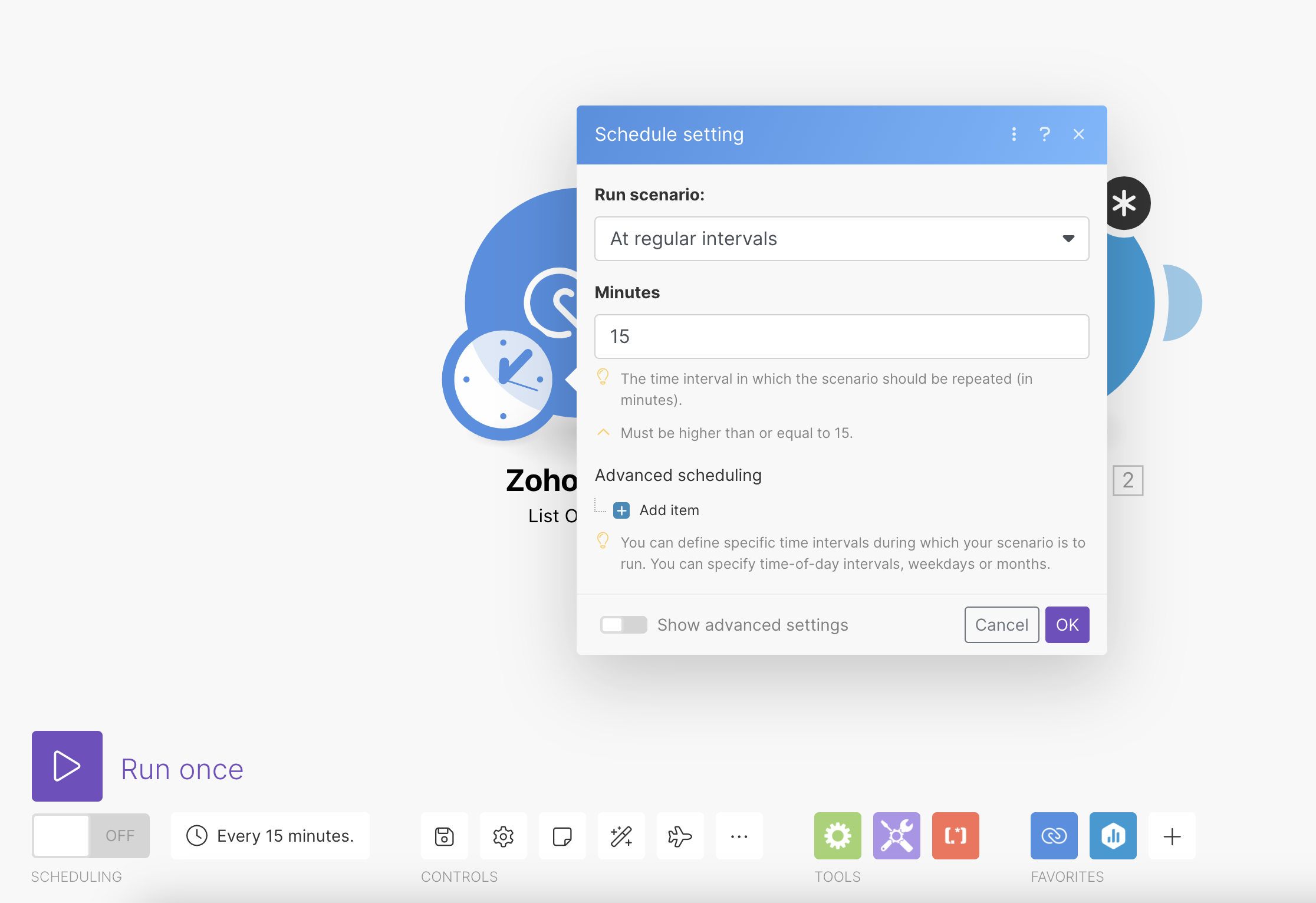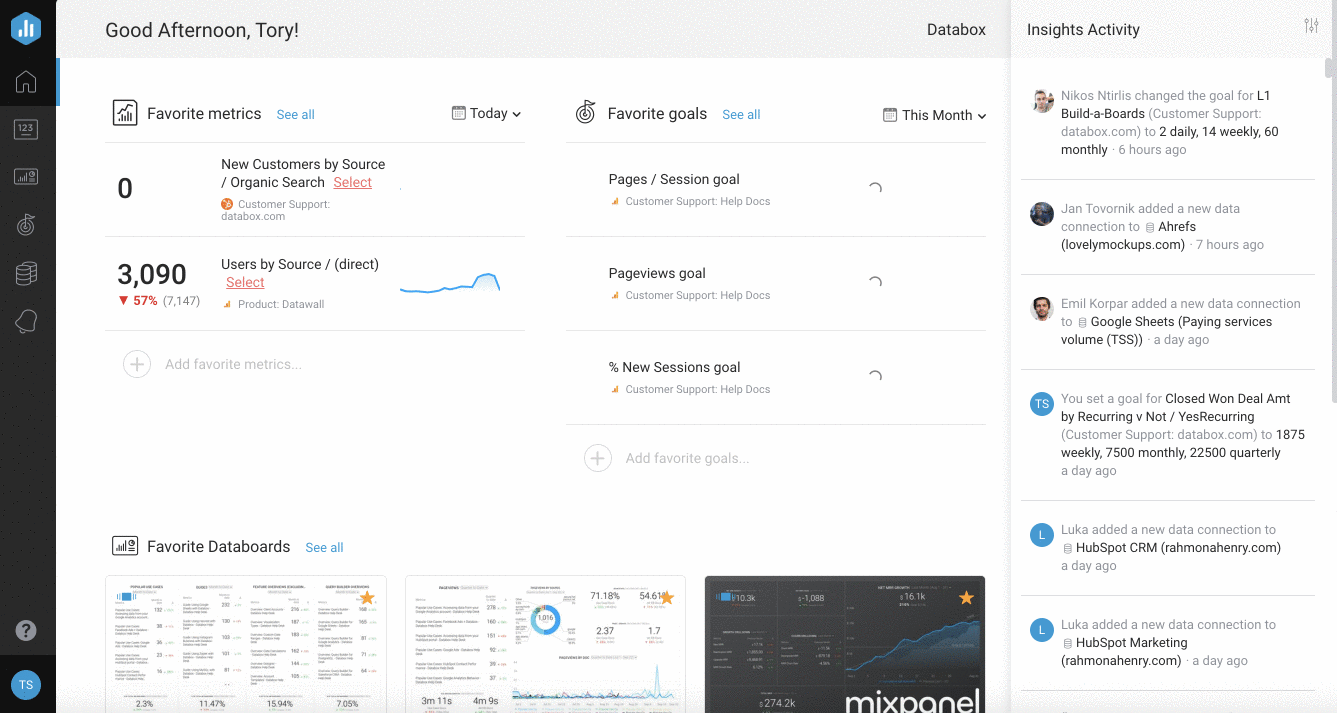Guide: Using Make (formerly Integromat) with Databox (Third-Party Integration)
Make (formerly Integromat) is a middleware tool that lets you transfer data between apps. If a platform isn't available on Databox's list of native integrations, you can use Make to connect to that platform and push data to Databox.
Make (formerly Integromat) has a long list of native integrations along with the ability to sync custom data via the API.
HOW TO
- Connect to Make and create a Scenario
- Push data to Databox
- Create a custom API connection
- Find someone who can set this up for you
How to connect to Make (Integromat) and create a Scenario
To see if a platform is natively supported by Make, check out Make's integrations page. If your platform is listed, you can follow the steps below to connect your data to your Databox Account.
- In Databox, navigate to the Data Manager and select + New Connection

2. Search for Integromat. Click the green Create Token ribbon.
 This will reveal the unique Token for this Make a connection. Copy this information to use in step #10 to connect Make with Databox.
This will reveal the unique Token for this Make a connection. Copy this information to use in step #10 to connect Make with Databox.4. Log in to your Make Account and click + Create a new scenario. A Scenario is a set of steps required to obtain, process, and push the data to Databox.

5. Click on the + button in the middle of a screen and select the Data Source you'd like to sync data from and Action.

Pro Tip: Actions include everything from listing all open deals in a CRM to searching for all pending invoices in your Accounting app.
6. Connect your Data Source to Make by clicking Add and enter your platform name and requested information in the Create a connection window. Click Continue and then OK to close the window.

7. After you've connected your Data Source with Make, right-click on the round icon and select Run this module only. This step is very important because it will get data from the destination and allow you to map what you want to push to Databox.

8. Select + Add Another Module and select Databox. The only Action option is to Submit Data. This will set Databox as the destination of the Scenario you're creating. Select this Action.

9. Connect Databox to Make by clicking Add and pasting the Make Token that was shared in Databox in the Token textbox. Click Continue and then OK to close the window.

10. Map out the values you want to be pushing to Databox. This is the same as pushing the data to Databox via the API, learn more here.

How to push data to Databox
After you've created your Scenario in Make (Integromat), you need to test the connection and make sure your data gets pushed at regular intervals.
1. In your Make Account, click on the name of the Scenario you created. Click Run once to manually run the Scenario in order to test that it’s working as expected.



Pro Tip: Syncing intervals in Databox are determined based on plan and Account activity. Learn more here.
How to create a custom API connection
If a platform isn't available on Make (Integromat's) list of native integrations, you can create your own integration that uses Make (Integromat) to sync data from your platform's API to Databox. Creating a custom API connection is relatively technical, so it's recommended that you have some experience with API calls before moving forward with this approach.
In order for this to be possible, the platform you're looking to sync data from must-have an open API and developer documentation available. This will confirm that you can obtain the data using the strategy outlined below.
-
Start by clicking + Create a new scenario:
-
From the list of integrations, select HTTP module and select an Action to make the HTTP request. Typically, we recommend choosing Make a request. The HTTP module will allow you to make custom API calls.
- Enter the API authentication parameters and the API request parameters. Sometimes this requires you to create Scenarios with multiple HTTP requests - one for obtaining an authentication token and one more where that token is passed along to make another request.
-
The next steps will vary depending on the API you're syncing data from, the data sets you're pushing, the date formats, data aggregations, etc. The objective of these steps is to determine the numerical (metric) values, dates, and (optional) dimensions that should be synced with Databox.
-
Click Run once to run your Scenario and test the HTTP request. This will pull in all of your data, so you can later map and push it to Databox.
- Once you're getting the data you need, follow the above steps for mapping the data and pushing it to Databox.
How to find someone who can set this up for you
If you don't have the time or resources to set this up yourself, check out Make's list of Registered Partners who can help create custom integrations for you.



